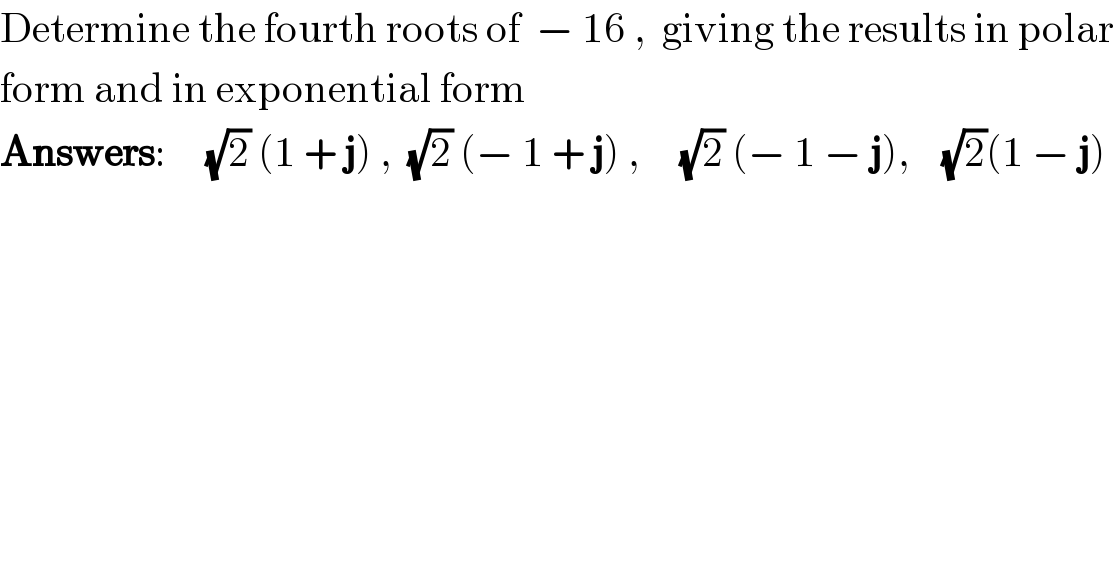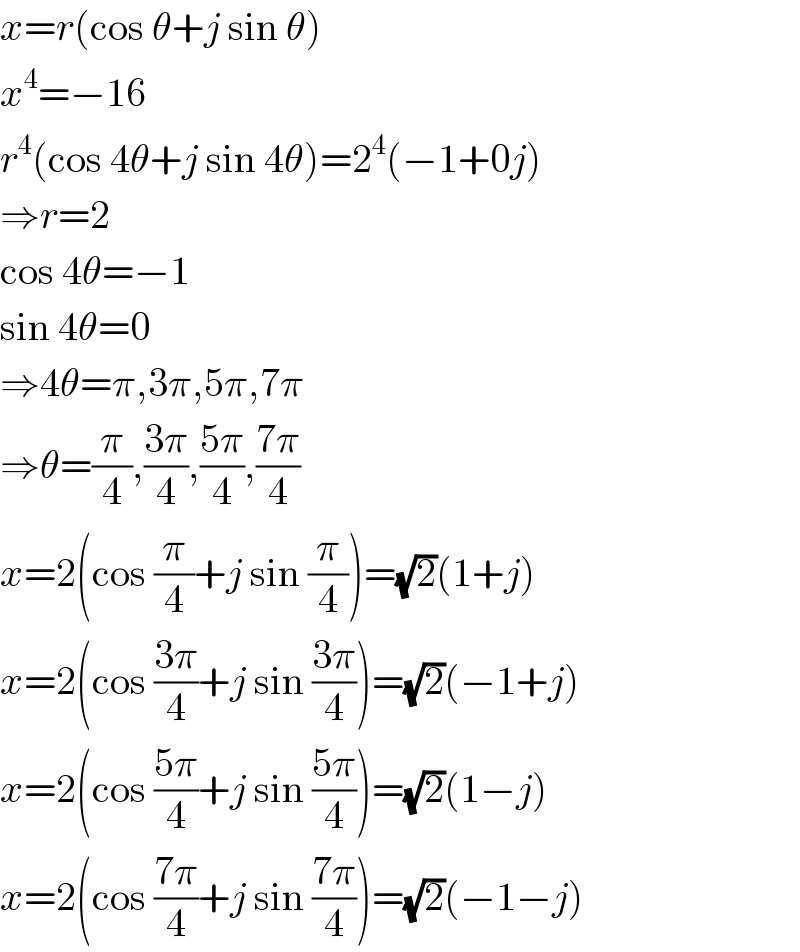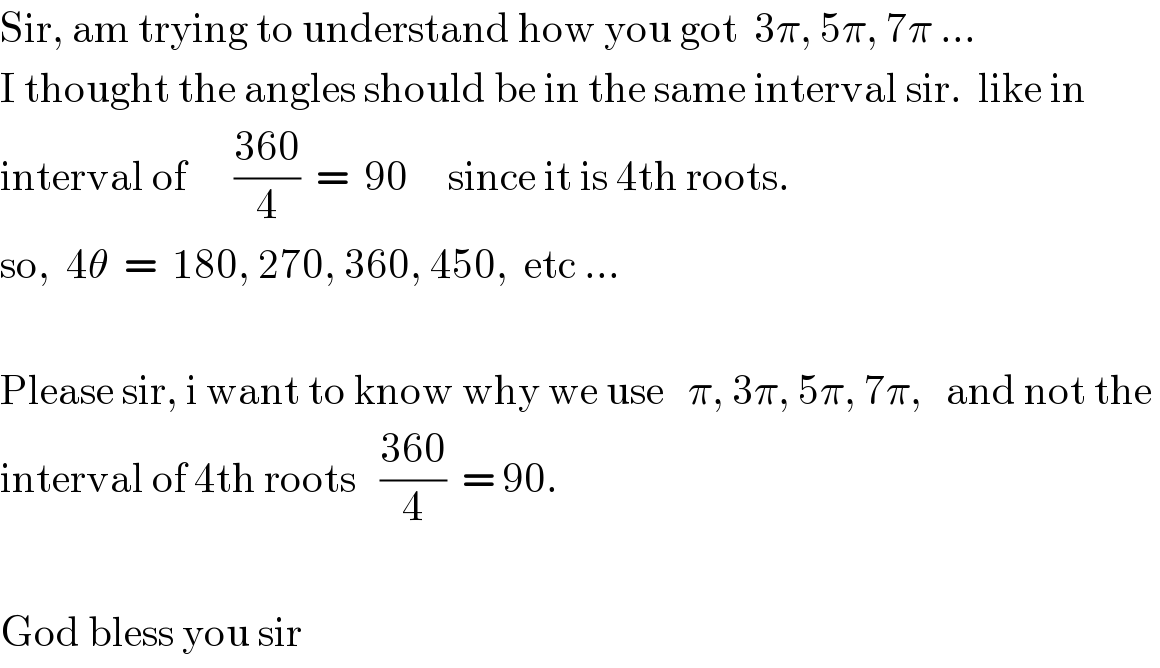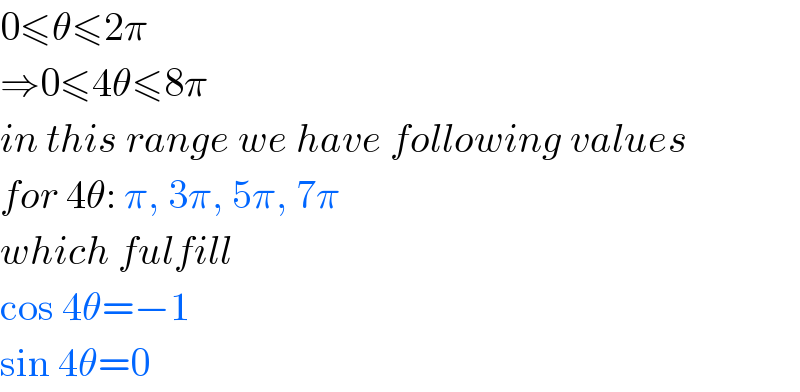Question Number 50806 by Tawa1 last updated on 20/Dec/18

Answered by mr W last updated on 20/Dec/18

Commented by Tawa1 last updated on 20/Dec/18

Commented by Tawa1 last updated on 21/Dec/18

Commented by mr W last updated on 21/Dec/18

Answered by peter frank last updated on 21/Dec/18
![z^4 =−16(cos π+jsin π) r=(√(16^2 )) =16 from z_k =r^(1/n) [cos ((θ+2πk)/n)+jsin ((θ+2πk)/n)] n=4 θ=π z_k =2[cos ((π+2πk)/4)+jsin ((π+2πk)/4)] k=0 z_0 =2(cos (π/4)+jsin (π/4))=(√2) (1+j) k=1 z_1 =2(cos ((3π)/4)+jsin ((3π)/4))=-(√2) (1−j) k=2 z_2 =2(cos ((5π)/4)+jsin ((5π)/4))=(√2) (-1−j) k=3 z_3 =2(cos ((7π)/4)+jsin ((7π)/4))=(√(2 ))(1−j)](https://www.tinkutara.com/question/Q50864.png)
Commented by Tawa1 last updated on 21/Dec/18

